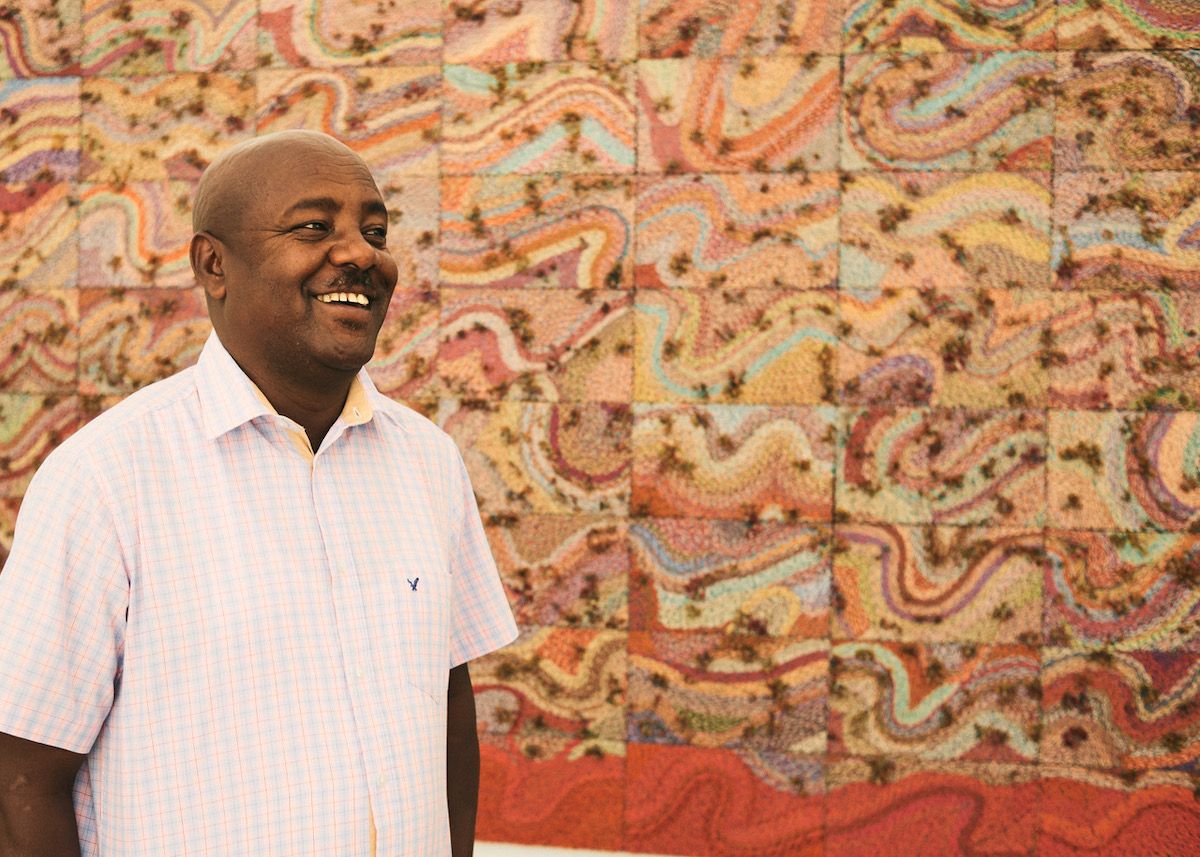The Wellin Museum of Art in upstate New York has organised the second monographic exhibition devoted to the Ethiopian artist Elias Sime, who is best known for transforming salvaged electronic materials into monumental compositions. The show Tightrope (until 8 December) presents more than 25 works the artist made in the last decade with materials mostly sourced from the Addis Merkato, a bustling open-air marketplace close to Sime’s studio in Addis Ababa that is a major nucleus for electronic waste from around the world.
Sime has worked with repurposed materials for most of his career in reference to West African weaving and braiding traditions. For the artist, completing a single piece is sometimes a years-long process that involves scouring markets and dealing with private sellers to source the precise material to be amalgamated into his large-scale compositions, whether that’s a dated motherboard or a uniquely coloured electrical wire.

Elias Sime. Tightrope 8, 2009-2014 © Elias Sime. Photo: Adam Reich Photography.
Among the highlights of the exhibition, the work Tightrope 8 (2009-14)—a vibrant 70in-wide piece—shows two figures among a dystopian landscape. And the 48 in-tall work Tightrope: On the Edge (2015) resembles a landfill within a thronging metropolis. The word “tightrope”, which Simes has revisited throughout his career, “recognises the uneasy balance between the advances made possible by technology and the impact they have had on our humanity and environment”, says the museum’s director Tracy Adler.
The exhibition also includes one site-specific sculpture called Flowers and Roots (2019) that Sime created with seven students from Hamilton College using repurposed computer parts, electrical wire, bronze sheeting and cast stones. The work, in which a colossal flower appears to bloom from the pavement, was inspired by the Saunders peonies—a hybrid flower developed at the school in the 1950s by the late chemistry professor Percy Saunders. “These peonies, which were in bloom when we first visited the school, were manipulated by humans through meddling with natural processes,” says the anthropologist and Sime's collaborator Meskerem Assegued. “Machines, which humans are so connected with and addicted to nowadays, are the same as the flowers: a man-made material once extracted from the earth that takes a different meaning and form once it’s been manipulated by humans.”

Installation view of Flowers & Roots, 2019, by artist Elias Sime, made in collaboration with Hamilton College students Photo: Janelle Rodriguez. Courtesy of the Wellin Museum of Art at Hamilton College.
In March this year, the artist inaugurated the environmentally conscious Zoma Museum in Addis Ababa with Assegued. The sprawling arts centre, which is made up mostly of intricately designed mud and cement structures, was founded with the mission to support contemporary African art while upholding traditional craft and architectural techniques. The museum was “created, built and finished with love”, the artist said in a previous interview with the Wellin Museum.
Sime is currently working on devising a public garden in the Menelik Palace in Addis Ababa for the Ethiopian prime minister Abiy Ahmed, who was inspired after a visit to Zoma Museum earlier this year. Ahmed plans to open the grounds of the royal palace for the first time since 1976, and the 30,000 sq ft garden, which is due to completed within the next six months, will comprise structures similar to the sinuous architecture found at the museum.
On 25 October, Sime will also be awarded the African Art Awards by the Smithsonian’s National Museum of African Art in Washington, DC, along with Njideka Akunyili Crosby.
- Elias Sime: Tightrope, Wellin Museum of Art, Clinton, New York, until 8 December 2019


